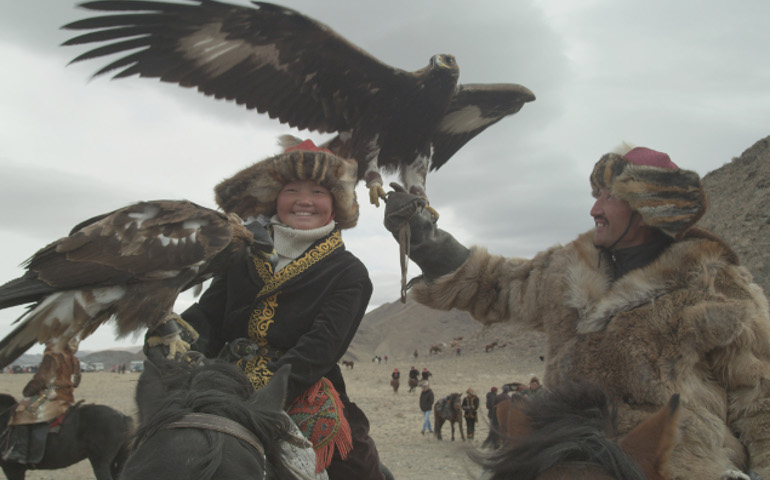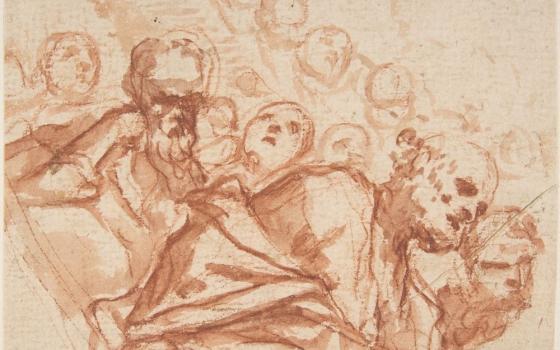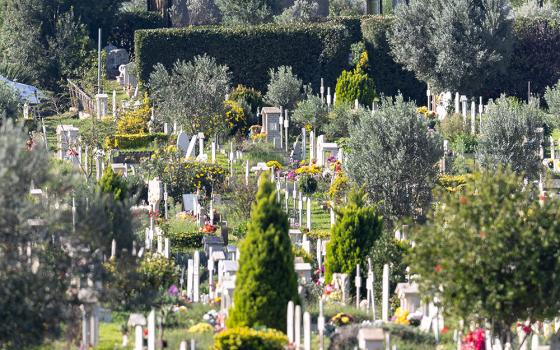
Aisholpan Nurgaiv, left, and her father, Agalai (Courtesy of Sony Pictures Classics/Asher Svidensky)
In the 2002 New Zealand film “Whale Rider” (directed by Niki Caro), a 13-year-old Maori girl named Paikea disrupts an ancient tradition of progeniture — a system that pre-ordains the eldest son as first in the line of succession for leadership — to emerge as the new chief destined to breathe new life to her dying tribe.
Traipsing on a similar path, the 2016 U.K.-produced film “The Eagle Huntress” (directed by Otto Bell) follows the adventures of Aisholpan, a 13-year-old girl from a nomadic Kazakh tribe in Mongolia, who overcomes seemingly insurmountable odds to emerge victorious in a tournament that had been, for generations, the exclusive domain of men.
The parallels between the two films are striking, but having said that, there is a marked difference. “Whale Rider” is an earnest work of fiction based on a Maori cultural myth; “The Eagle Huntress” is a beautifully realized documentary, shot as cultural phenomena unfold.
Aisholpan Nurgaiv is a plucky schoolgirl with a sunny disposition to match her cherubic face. Because her homestead is located in the remote Mongolian Altai Mountains, she needs to live in a boarding school on weekdays with other girls her age. This all seems unspectacular until we get a glimpse of what she does in off-school days: She is undergoing serious training to qualify her for eagle hunting, the ancient practice of raising fledgling golden eagles to catch other animals for meat and fur. This means undergoing a physically and psychologically challenging regimen apparently designed for muscular, grown men.
The film takes us to each stage of the journey that Aisholpan must hurdle before she realizes her lofty dream. The starting point is, in and of itself, a perilous challenge. Her father, Agalai, harnesses his daughter with rope and lowers her on a steep cliff to an eagle’s nest where she is to capture one of the eaglets. To be sure, witnessing Aisholpan as she struggles to snatch a large bird of prey from its nest while the mother eagle hovers in the background is a nail-biting experience; one can’t help but root for the brave girl.
In the next scenes, we see how Aisholpan begins to bond with her eagle, a female like her. She learns how to use her arm as perch to some 15 pounds of avian muscle, how to set the bird to flight and teach it to respond to her call. Through sheer determination and discipline, the young girl and her winged partner are finally ready to compete against 70 men in the hunting tournament.
I anticipate that the art of eagle hunting might invite questions about the treatment of wildlife, to which I would suggest thinking in context: Understand that this is a 4,000-year-old tradition of an indigenous, nomadic culture of people who live off the land and keep a close relationship with nature. It would be unreasonable to mention their use of eagles in the same breath as the excesses and ecological degradation wrought by affluent consumerist cultures.
Notably, custom dictates that the eagles be set free after seven years when they have reached mating age. The continuation of the circle of life is celebrated with a meaningful ritual where the trainer offers an entire slaughtered sheep to the eagle, accompanied by a prayer of thanksgiving.
Watching “The Eagle Huntress” is virtually entering into another world. The audience is ushered into a liminal space, a threshold where past and present are interwoven. From start to finish, the stunning cinematography — painterly wide-angle shots and gravity-defying drone shots contrasted with closer, intimate shots — opens a portal into a lost horizon where resplendently garbed Eurasian nomads on horseback ride against the backdrop of a vast, frozen mountainscape.
Simon Niblett, director of cinematography, achieved this creative feat with the help of just two other cinematographers; the three made a heroic effort to work within the limits of a shoestring budget and in bitingly cold conditions. The visual tour de force makes “The Eagle Huntress” worth the theater experience.
The film’s human story is a fascinating study of culture as a site of creative tension. Getting a glimpse of Aisholpan’s family life, we begin to understand where her strength and confidence are rooted. This family is a countercultural force in what appears to be a patriarchally oriented culture. As the narrative reels out, amusing cut-to-cut close-ups of cynical male community elders, each one a naysaying “talking head,” punctuate the scenes of Aisholpan’s sojourn. But the girl stands on solid footing; she finds support where it counts the most — her family. Leading her cheering squad are her father and grandfather, veteran eagle hunters both, who do not see her gender as an issue and who wholeheartedly believe that she is the one.
The pageantry and energy of the tournament proper is an exhilarating watch. One male competitor after another takes his turn in a series of challenges that are largely dependent on the rigor of one’s training, not to mention the bond of trust between the hunter and the eagle partner. When Aisholpan is finally introduced, there is a noticeable sense of bemusement from the crowd. After all, she is small girl in a big man’s world, and that is exactly how she looks. Aisholpan, not surprisingly, proves the cynics wrong.
That said, the tournament is the film’s false climax. The true test of an eagle hunter is yet to come. Aisholpan needs to move beyond the artificially constructed context of an organized tournament into an actual fox hunting expedition. This means riding on horseback for days out in the untamed Altai Mountains, eagle perched on one arm, and exposed to punishing temperatures of minus 20 degrees Fahrenheit. These are treacherous conditions for an adult hunter, let alone an inexperienced minor. And this is her eagle’s maiden attempt at actual hunting, so there are no guarantees to success. But we have previously seen how Aisholpan’s mojo works, how she can beat the odds and emerge triumphant.
Yes, we have previously seen the story of the unexpected heroine and its various re-appropriations in film. But I bet you have never seen a 13-year-old plucky Kazakh schoolgirl from Mongolia soar like a golden eagle before. This is your chance.
[Precious Blood Br. Antonio D. Sison is associate professor of systematic theology at Catholic Theological Union, Chicago, and author of the book The Sacred Foodways of Film. “The Eagle Huntress” is available on video from Sony Pictures Classics.]


